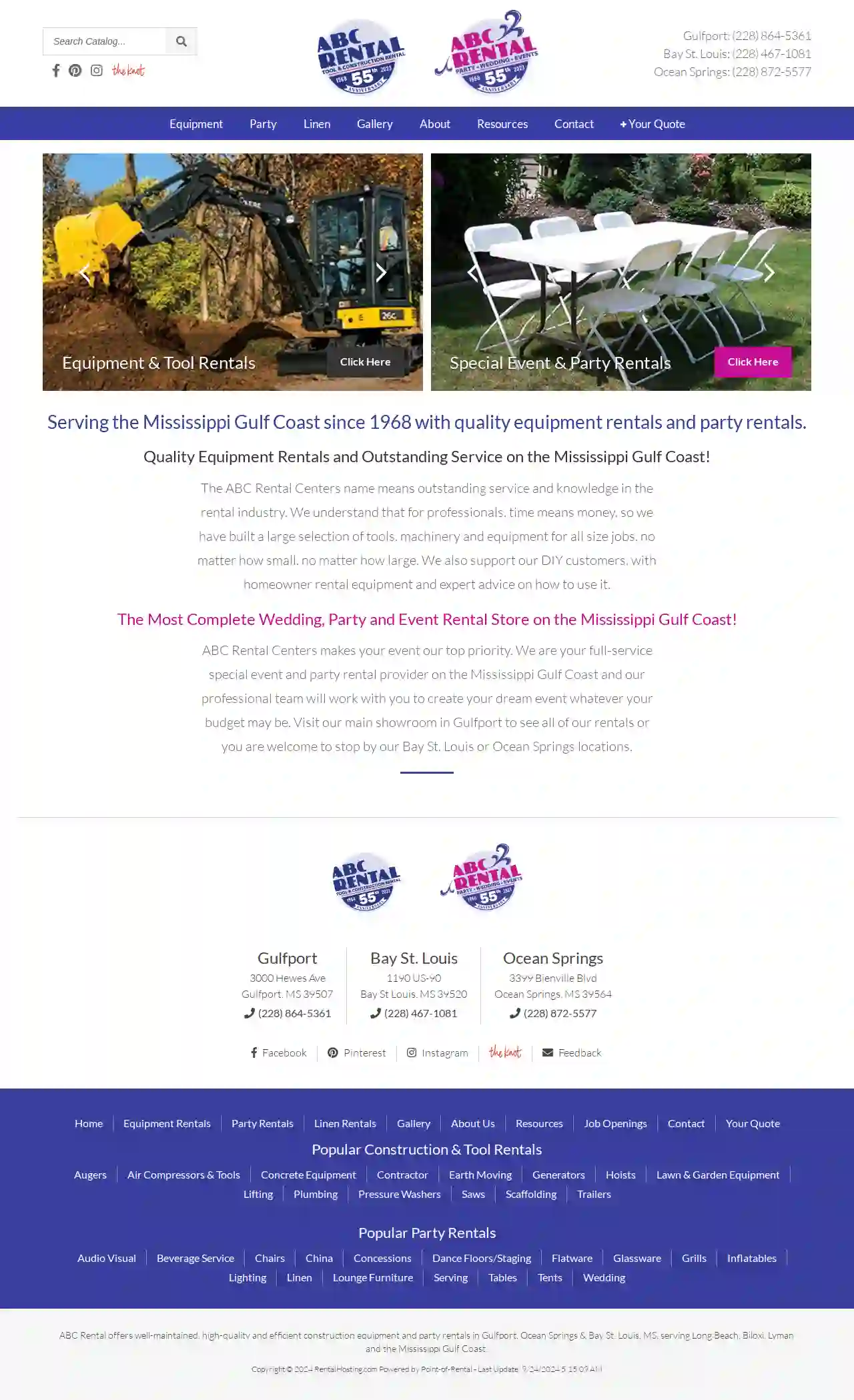Scaffolding Companies Brandon
Find top Scaffolding Companies in Brandon
Get up to 3 Scaffolding Experts quotes for your project today! Compare profiles, reviews, accreditations, portfolio, etc... and choose the best service.
Service Needed
City or Town

ABC Rental Center
4.4151 reviews3000 Hewes Ave, Gulfport, 39507, USABC Rental offers well-maintained, high-quality and efficient construction equipment and party rentals in Gulfport, Ocean Springs & Bay St. Louis, MS, serving Long Beach, Biloxi, Lyman and the Mississippi Gulf Coast. With a wide range of equipment and party rentals, ABC Rental is dedicated to providing outstanding service and knowledge in the rental industry.
- Services
- Why Us?
- Gallery
Get Quote- Ma
Magnolia Masonry of South Mississippi LLC
4.914 reviewsGulfport, US- Services
- Why Us?
Get Quote - Th
The Home Depot
4.2Gulfport, US- Services
- Why Us?
Get Quote - Cr
Crom Equipment Rentals Inc
Gulfport, US- Services
- Why Us?
Get Quote - Lo
Lowe's Home Improvement
4.1Gulfport, US- Services
- Why Us?
Get Quote
Over 2,353+ Scaffolding Contractors in our network
Our scaffolding pros operate in Brandon & surrounding areas!
ScaffoldingHQ has curated and vetted Top Scaffolding Businesses arround Brandon. Find the most trustworthy pro today.
Frequently Asked Questions About Scaffolding Companies
Find answers to common questions about scaffolding companies and hiring scaffolding contractors in the USA.
- Project Height and Access: The height of the structure and the accessibility of the working area are primary considerations.
- Load Capacity: The weight of workers, materials, and equipment that the scaffolding needs to support.
- Project Complexity and Shape: The shape and complexity of the structure may necessitate specialized scaffolding configurations.
- Ground Conditions: The type of ground (soft, uneven, sloping) will influence the scaffolding foundation and support requirements.
- Duration of Use: The length of time the scaffolding will be needed can impact the choice of system.
- Budget: Different scaffolding types have varying costs.
- Traditional and highly versatile.
- Components (tubes, clamps, boards) are assembled on-site.
- Adaptable to complex shapes and structures.
- Requires skilled labor and more time for erection.
- Pre-engineered, modular components.
- Faster and easier to erect.
- Often has higher load capacities.
- May be less versatile for complex shapes.
- Size and Complexity: Larger, more intricate scaffolding structures will naturally take longer to assemble.
- Scaffolding Type: System scaffolding, with its pre-engineered components, can be erected faster than traditional tube and clamp scaffolding.
- Accessibility: Difficult site access or limited working space can prolong the erection process.
- Crew Size and Experience: The number and skill level of the scaffolding erectors will impact the speed of assembly.
How do I choose the right type of scaffolding for my project?
Selecting the correct scaffolding depends on your project's specific requirements:
Can I erect scaffolding myself?
While it might seem tempting to save money, it's strongly recommended NOT to erect scaffolding yourself unless you are a trained and competent scaffolding erector. Scaffolding erection requires specialized knowledge, skills, and tools to ensure safety and structural stability. Incorrectly erected scaffolding can lead to serious accidents. Always hire a qualified and experienced scaffolding company to handle the installation and dismantling of scaffolding.
What is the difference between tube and clamp scaffolding and system scaffolding?
The two main types of scaffolding systems have distinct advantages and disadvantages:
Tube and Clamp Scaffolding:
Tube and Clamp Scaffolding:
How long does it take to erect scaffolding?
The erection time for scaffolding depends on factors such as:
How do I choose the right type of scaffolding for my project?
Selecting the correct scaffolding depends on your project's specific requirements:
- Project Height and Access: The height of the structure and the accessibility of the working area are primary considerations.
- Load Capacity: The weight of workers, materials, and equipment that the scaffolding needs to support.
- Project Complexity and Shape: The shape and complexity of the structure may necessitate specialized scaffolding configurations.
- Ground Conditions: The type of ground (soft, uneven, sloping) will influence the scaffolding foundation and support requirements.
- Duration of Use: The length of time the scaffolding will be needed can impact the choice of system.
- Budget: Different scaffolding types have varying costs.
Can I erect scaffolding myself?
While it might seem tempting to save money, it's strongly recommended NOT to erect scaffolding yourself unless you are a trained and competent scaffolding erector. Scaffolding erection requires specialized knowledge, skills, and tools to ensure safety and structural stability. Incorrectly erected scaffolding can lead to serious accidents. Always hire a qualified and experienced scaffolding company to handle the installation and dismantling of scaffolding.
What is the difference between tube and clamp scaffolding and system scaffolding?
The two main types of scaffolding systems have distinct advantages and disadvantages:
Tube and Clamp Scaffolding:
Tube and Clamp Scaffolding:
- Traditional and highly versatile.
- Components (tubes, clamps, boards) are assembled on-site.
- Adaptable to complex shapes and structures.
- Requires skilled labor and more time for erection.
- Pre-engineered, modular components.
- Faster and easier to erect.
- Often has higher load capacities.
- May be less versatile for complex shapes.
How long does it take to erect scaffolding?
The erection time for scaffolding depends on factors such as:
- Size and Complexity: Larger, more intricate scaffolding structures will naturally take longer to assemble.
- Scaffolding Type: System scaffolding, with its pre-engineered components, can be erected faster than traditional tube and clamp scaffolding.
- Accessibility: Difficult site access or limited working space can prolong the erection process.
- Crew Size and Experience: The number and skill level of the scaffolding erectors will impact the speed of assembly.